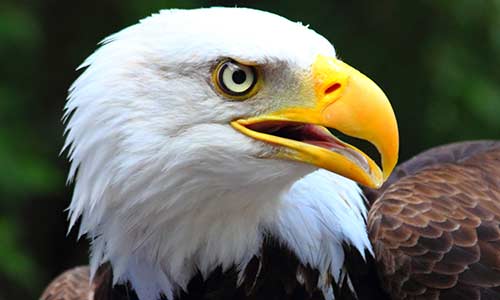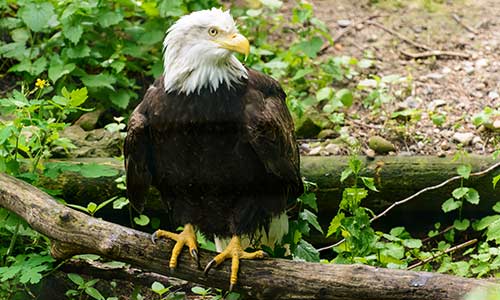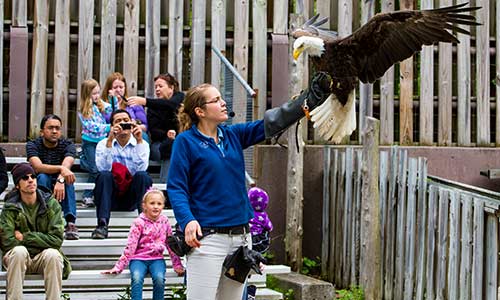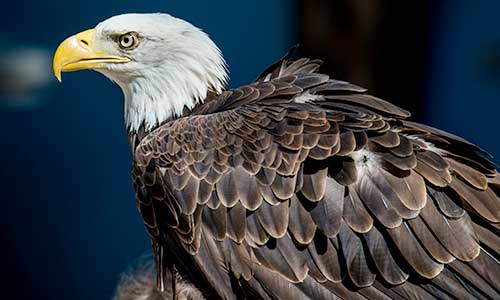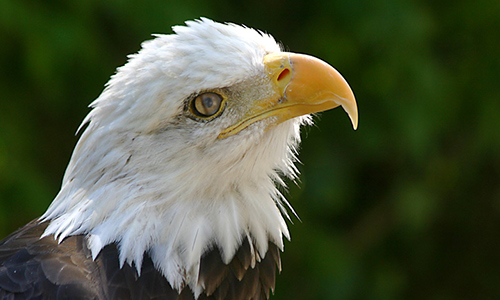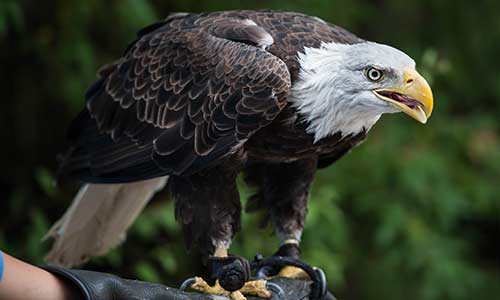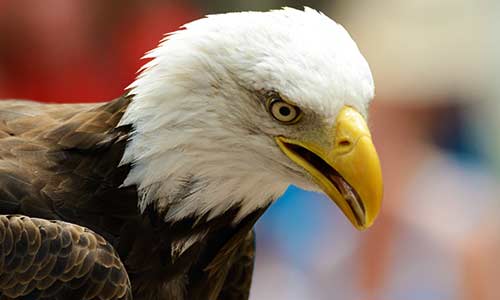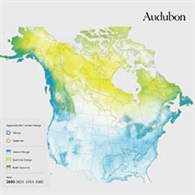Bald Eagle
Haliaeetus leucocephalus
About the Bald Eagle

Geographic Range:
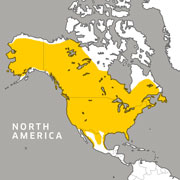
Class: Aves
Order: Falconiformes
Family: Accipitridae
Genus: Haliaeetus
Species: leucocephalus
The bald eagle, our nation's national symbol, develops its characteristic white head and tail at 5 to 6 years of age. Its beak, feet and eyes are yellow. When hunting, the eagle uses its sharp eyesight and proportionally large eyes to detect the slightest ripple in the water or the movement of prey on land. Its powerful feet have opposable toes with 2-inch talons and spurs, enabling it to easily grasp slippery prey.
Bald Eagle Facts
Appearance:
This majestic raptor develops its white head and tail at 5 to 6 years of age. Its beak, feet and eyes are yellow. Eagles’ powerful feet have opposing toes with 2-inch talons and spurs, allowing them to easily grasp slippery prey. Their legs are bare up to several inches above their feet, which prevents their feathers from getting wet. Their large “eagle eyes” and keen eyesight enable these birds to detect their preys’ movement by even a slight ripple in the water. Having large wings allows eagles to conserve energy by flapping less, and instead soaring on air currents.
Size:
- General: 28 – 36 inches from beak to tail; wingspan: 6 – 8 feet
- Male: 7 – 10 pounds
- Female: 10 – 14 pounds
Diet:
Bald eagles are mostly fish eaters, but they’ll also consume small birds, mammals and carrion. They’re known to steal food from other animals.
Reproduction:
Adult pairs mate for life, but if a mate dies, re-pairing can occur quickly. Breeding varies by location. In the north, eggs are laid in the spring; in southern locations, November through December. Both adults construct their nest in tall trees or rocks on the ground using sticks lined with grass, feathers, moss and other soft materials. A source of water is always close by. Nests are re-used year after year, and they can reach 7 to 8 feet across, 12 feet deep, and weigh up to a ton. Both parents incubate the eggs for 35 days, and hatching is asynchronous (takes place over a few days).
Bald eagles produce one or two offspring per year. Some research suggests a sex bias with a tendency toward females hatching first. There’s often competition for survival among nestlings during the first month, and older babies are more likely to survive. They remain fledglings for 72 to 75 days and reach sexual maturity at 5 years of age.
Behavior:
Bald eagles establish territories and home ranges, which they defend intensely. They consider the area around the nest their individual territory. These birds hunt both alone and with others.
Role in Habitat:
Bald Eagles are top predators, and they have few predators aside from humans.
Habitat/Range:
Bald eagles are native to North America. In the summer they migrate north for breeding, and in the winter they migrate south.
Life Expectancy:
Average 17 years
Fun Facts:
- Passed in 1940, the Bald Eagle Protection Act made it illegal to possess, harass, harm or kill bald eagles, including their eggs, nests and feathers. Their numbers continued to decline, however, due to habitat loss, decreased prey species and illegal kills.
- Prior to World War ll, the use of DDT to control mosquitoes also greatly contributed to eagles’ decline. DDT impairs the birds’ ability to release calcium, which causes weakened eggshells. DDT was later banned in 1972.
- The bald eagle became the national symbol of the United States in 1782. European eagles have also been given national status. Native American tribes considered eagles to be emissaries to the Creator, and Egyptians released eagles during funerals to assist sprits of the dead to their after life.
You Can Find This Animal in the Yukon Creek
How climate change could affect this bird's range
Audubon scientists have used thousands of citizen-science observations and sophisticated climate models to predict how birds in the U.S. and Canada will react to climate change. According to this model, the bald eagle is projected to have only 26 percent of its current summer range remaining by 2080. View map
You Might Also Like
At Franklin Park Zoo:
At Stone Zoo:

